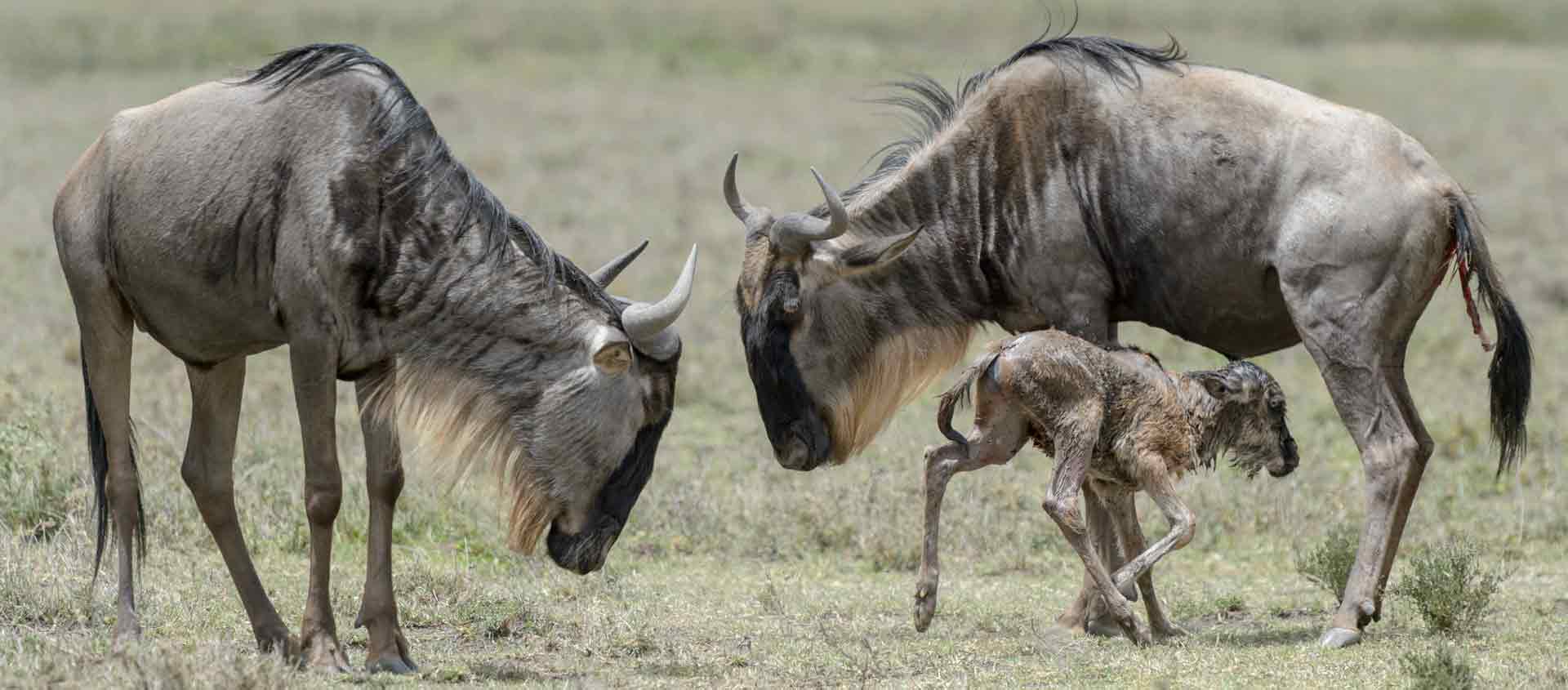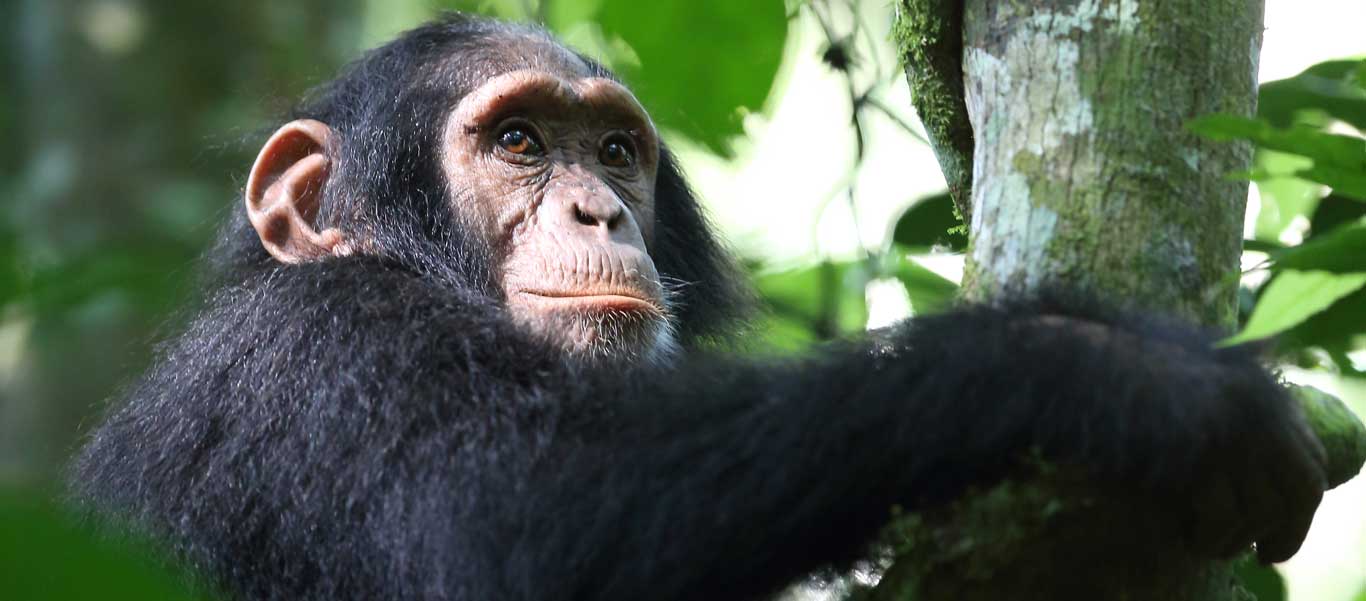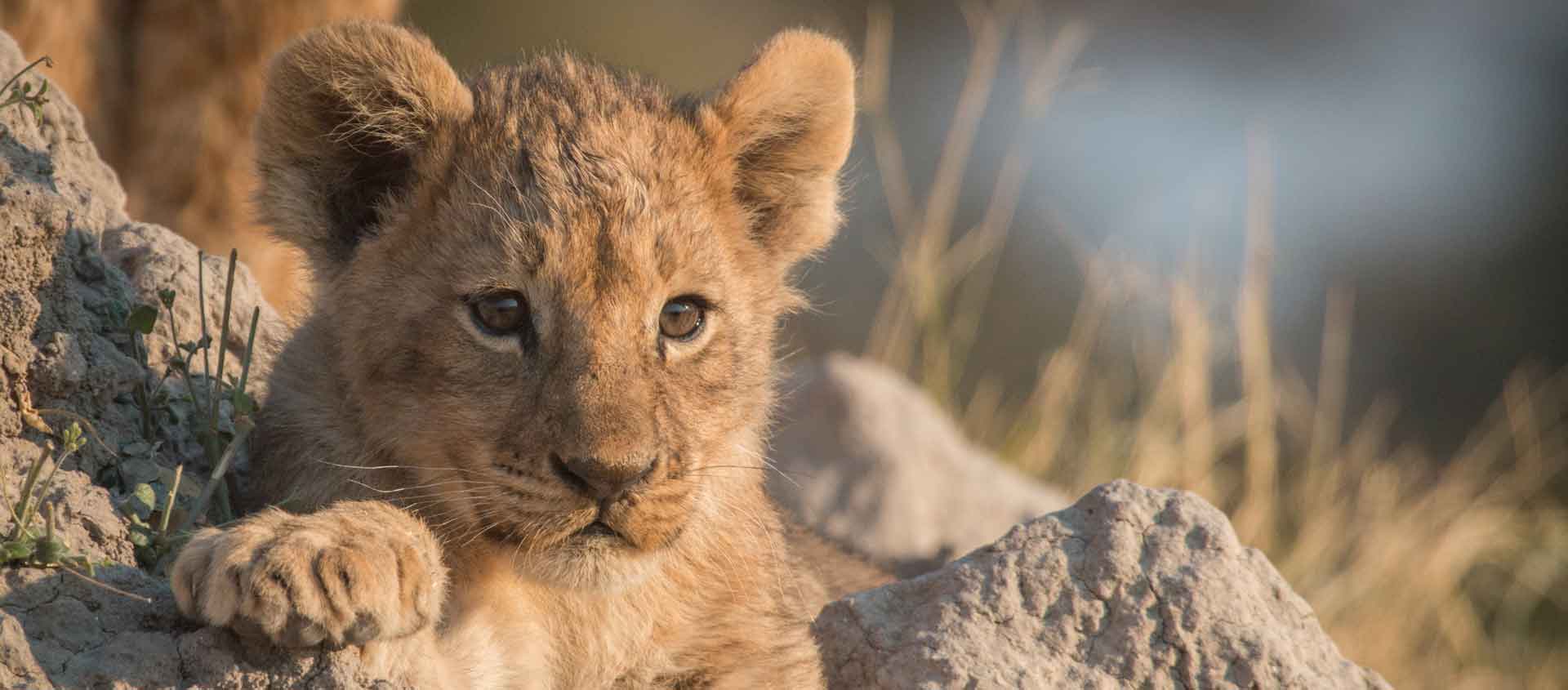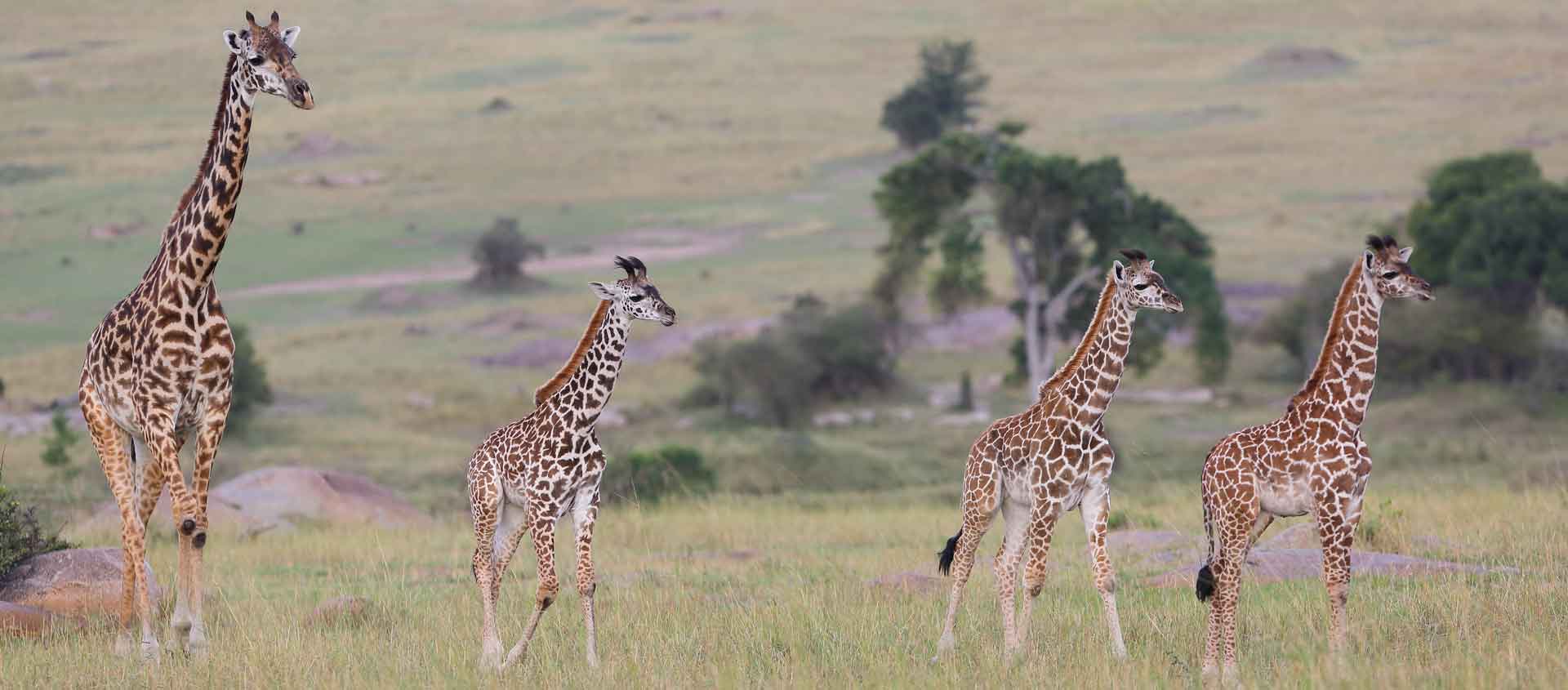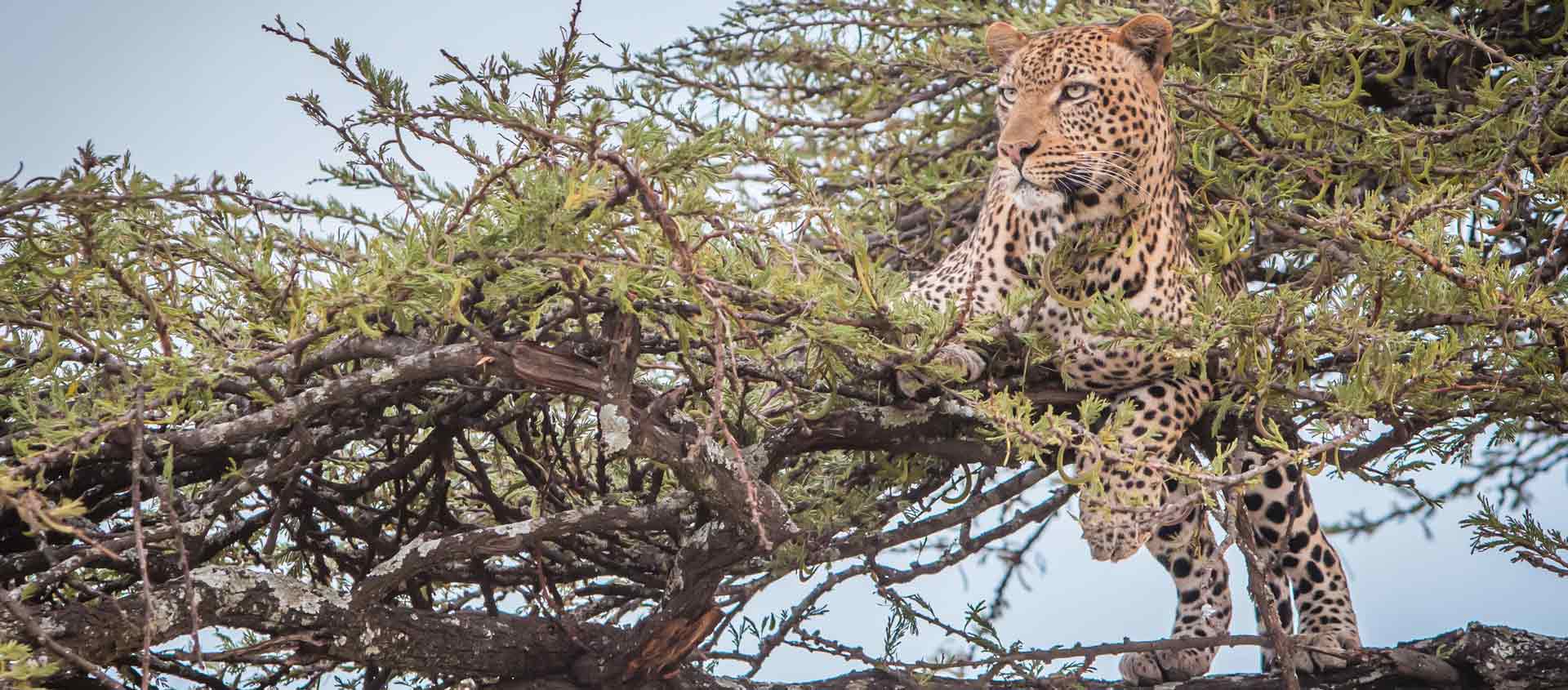Tanzania: Southern Serengeti & Mahale
February 7 – 19, 2026
Tanzania Safari: The Serengeti and Mahale
The combination of iconic wildlife spectacles and staggering scenic diversity leads us to believe that this is the very “Best of Tanzania”! Photograph Savanna Elephants and Fringe-eared Oryx among the statuesque baobabs of Tarangire. Experience giant Tuskers and countless Lions in the world-renowned Ngorongoro Crater. Witness the timeless drama of the synchronized birthing of thousands of wildebeest and zebra in Southern Serengeti. Track Chimpanzees in the fabled Mahale Mountains, for intimate, once-in-a-lifetime insights into the lives of our closest genetic cousins. Join Apex as we take in the full circle of life on this Tanzania safari of the Serengeti and Mahale.
Destinations
- Travel by Air
- Travel by Road
- Travel by Boat
- Travel by Bullet Train
- Travel by Rail
- Travel by Dog Sled
-
Saturday, February 7: Arrive Arusha
Arrive at Kilimanjaro International Airport, Tanzania’s safari gateway. Transfer to the town of Arusha for an overnight stay at Arusha Coffee Lodge, nestled among the sprawling grounds of Tanzania’s largest coffee plantation. Gather this evening for a welcome dinner and briefing by your expedition leader to prepare you for the exploration that lies ahead. Overnight at Arusha Coffee Lodge.
-
Sunday, February 8: Arusha / Tarangire National Park
After breakfast, set out for Tarangire National Park, situated within Tanzania’s spectacular Manyara Region. This expansive park is a must for elephant lovers, with up to 3,000 individuals in the park at times. Good numbers of Eastern White-bearded Wildebeest, Plains Zebra, Masai Giraffe, Cape Buffalo, and Thompson’s Gazelle also use the area as a dry season refuge. Tarangire is equally appealing to keen birders, boasting a broad array of avian denizens of the Great Rift Valley, from hornbills and bee-eaters to bush-shrikes and widowbirds. Three Tanzanian endemics, the colorful Yellow-collared Lovebird, Rufous-tailed Weaver, and Ashy Starling are all numerous here. Our camp is situated in the northern corner of the park, offering a secluded and authentic African bush experience, with animals regularly passing through camp. Dinner and overnight at Tarangire Ndovu Tented Lodge.
-
Monday, February 9: Tarangire National Park
In addition to being home to a full complement of the charismatic megafauna of East Africa, Tarangire is among the few places in Tanzania where arid country antelope such as Fringe-eared Oryx and long-necked Gerenuk can be seen. Africa’s smallest carnivore, the elusive Dwarf Mongoose, is also regularly encountered. This scenically spectacular area is equally renowned for its landscape of magnificent baobab trees, with breathtaking views over the Masai Steppe and the wondrous Eastern Arc mountains to the south. Explore by foot on a walking safari, or by vehicle, with game drives ending in spectacular sunsets. Dinner and overnight at Tarangire Ndovu Tented Lodge.
-
Tuesday, February 10: Tarangire National Park / Ngorongoro Crater
After breakfast, head toward the Ngorongoro Crater. Along the way, stop at a local Masai village to browse the bustling marketplace, sample beer at a local brewery, and enjoy lunch. This afternoon, continue to the northwest rim of the Ngorongoro Crater to the Entamanu Ngorongoro Camp
overlooking the Crater. Once you’ve settled into camp, take a walk through the highlands with a Masai scout to learn about his relationship with the natural world. Dinner and overnight at Entamanu Ngorongoro Camp.
-
Wednesday, February 11: Ngorongoro Crater
Rise at dawn for an adventure into one of the world’s most spectacular wildlife sanctuaries, the Ngorongoro Crater. The 100-square-mile crater floor is an ecological microcosm of East Africa, with forests, lakes, grasslands, swamps and rivers that together support a staggering 30,000 large animals. Huge concentrations of Serengeti White-bearded Wildebeest and Plains Zebra are accompanied by smaller numbers of the crater’s famous Giant Tuskers, Cape Buffalo, Hippos, Topi, and both Thomson’s and Grant’s Gazelles. Predators like Lion, Cheetah, Leopard, Spotted Hyena, Bat-eared Fox, and both Golden and Black-backed Jackal are regularly encountered. You may even be lucky enough to spot the critically endangered Black Rhino. Birders will not be disappointed—see rafts of Lesser Flamingos on Lake Magadi, Ostrich, Kori Bustard, flocks of majestic Grey Crowned Cranes, Lilac-breasted Roller, and raptors like the unique Secretarybird and peculiar Long-crested Eagle. Return to Entamanu Ngorongoro Camp for dinner and overnight.
-
Thursday, February 12: Ngorongoro Crater / Southern Serengeti
The Serengeti is Tanzania’s oldest national park. Its name means “endless plain” in the Masai language, which is fitting, as the park is comprised of 5,700 square miles of plains, open woodlands, and rivers. The park is a veritable wildlife feast, offering a host of resident mammals and simply superb birds, with over 550 species having been recorded. Today, experience one of the most dramatic transitions in all of East Africa, as you travel from the well-watered highland forests into the arid thorn bush country of Olduvai Gorge, one of the world’s most important paleoanthropological sites. The gorge was vital in establishing the African origin of humankind and in turn, why it is referred to as the ‘Cradle of Mankind’. Continue your journey as a game drive into the vastness of the southern Serengeti to Serengeti Mobile Camp for dinner and overnight.
-
Friday – Sunday, February 13 – 15: Southern Serengeti
This expedition is centered around this exact time of year, at the very epicenter of the wildebeest birthing area. Our days are spent on game drives that put us in position to witness huge concentrations of wildebeest and zebra being born and taking their first wobbly steps across the short grass savanna. These treeless plains also provide perfect habitat for Cheetah, who have made this region their permanent home. In addition, several smaller, but no less spectacular, species of cats such as the elusive Caracal, Serval, and African Wild Cat, are also relatively numerous here. Ungulates abound, and in addition to the ever-present wildebeest and zebra, Cape Buffalo, Masai Giraffe, Common Warthog, Thomson’s and Grant’s Gazelles, Impala, Topi, Kongoni, diminutive Kirk’s Dik-diks, Oribi, Defassa Waterbuck, Bohor Reedbuck, and Eland may also be seen. Birding is also spectacular at this time of year, with European winter migrants augmenting the resident avian icons of the African savanna, such as Bateleur, the aptly named Beautiful Sunbird, and the stunning Blue-capped Cordon-bleu. Dinners and overnights at Serengeti Mobile Camp.
-
Monday, February 16: Southern Serengeti / Mahale Mountains National Park
Enjoy one last morning game drive before transferring to the airstrip for a flight to one of East Africa’s premier Chimpanzee-tracking destinations: Mahale Mountains National Park. A complete change of scene from Southern Serengeti, Mahale has an idyllic setting of sandy, forest-lined beaches lapped by the transparent waters of Lake Tanganyika and backed by the forested peaks of the Mahale Mountains. After landing at the airstrip, a traditional sailing dhow takes you to your lodge, the stunning lakeshore Greystoke Mahale for dinner and overnight.
-
Tuesday & Wednesday, February 17 & 18: Mahale Mountains National Park
Tracking Chimpanzees—humanity’s closest living genetic allies—is the main activity at Mahale. The forests here support a healthy population of almost 1,000 wild Eastern Chimpanzees, including the 60-strong Mimikere Community. First habituated by Japanese researchers in the 1960s, the Mimikere group now barely acknowledges the presence of humans, providing visitors a unique opportunity to walk in the midst of these intelligent, sociable, and thoroughly fascinating creatures.
No less than eight smaller primate species have also been recorded here, with Yellow Baboon, Ashy Red Colobus, and Blue, Red-tailed and Vervet Monkeys all frequently encountered close to camp. Superb all-round birding is boosted by several charismatic forest species—among them Narina Trogon, Ross’s Turaco, Blue-breasted Kingfisher, Trumpeter Hornbill, and Crested Malimbe. Between walks, take a refreshing dip or snorkel in Lake Tanganyika, which stands at an altitude of 2,536 feet on the Rift Valley floor, below the forest-clad slopes and wild crags of the 8,070-foot Mahale Mountains. Home to more than 500 fish species, this magnificently scenic inland sea ranks as the world’s longest and second-deepest freshwater body, and is also credibly claimed to be the least polluted lake on the planet. Enjoy sundowners on the beach, and dinners and overnights at the stunning Greystoke Mahale.
-
Thursday, February 19: Mahale Mountains National Park / Arusha
After a final morning in Mahale Mountains National Park, enjoy lunch overlooking Lake Tanganyika before transferring to the airstrip for your flight to Kilimanjaro International Airport to connect with flights home.
Details
- February 7 – 19, 2026
- Leaders Marco Tonoli & Gerald Broddelez
- $25,970 Per Person Rate
- $29,980 Solo Rate
- 13 days Trip Length
- 10 guests
- Arusha Start/End
Call us to reserve your spot on this exciting expedition!

